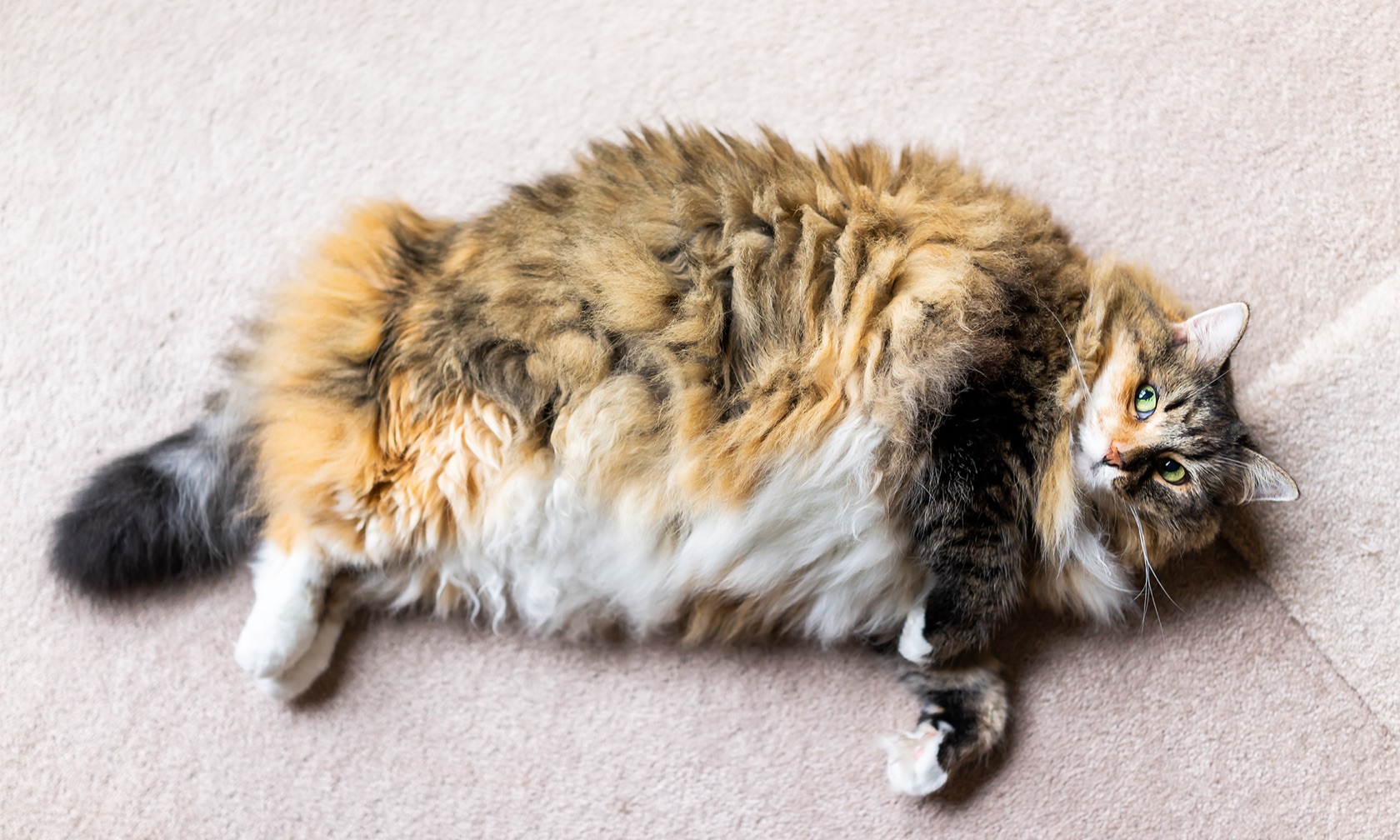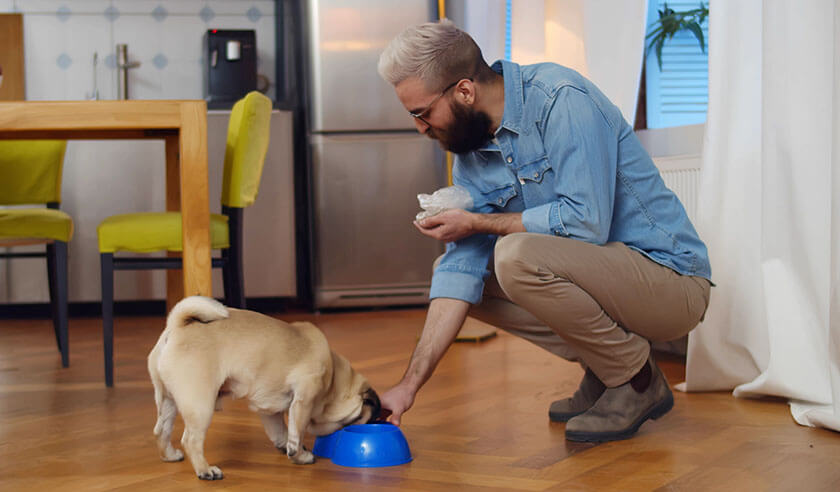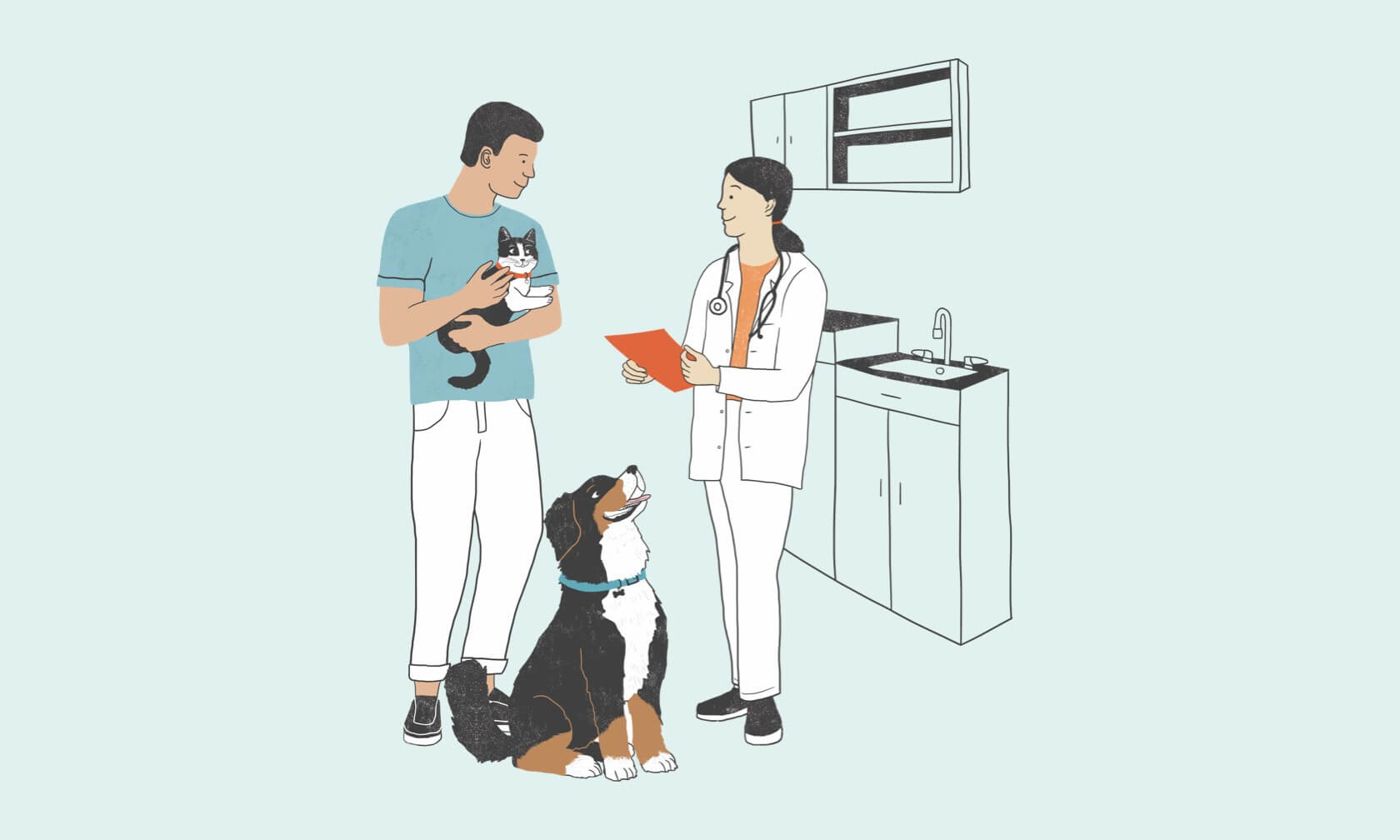Obesity is a growing problem for cats and dogs. A recent study by the Association for Pet Obesity Prevention found that 55.8% of dogs and 59.5% of cats in the US are overweight1. That’s over half of the dogs and cats in the United States! Unfortunately, a majority of pet owners with overweight cats and dogs in the study didn’t realize their pet’s weight problem and thought their pet was at a healthy weight.
Why Should I Be Concerned About My Pet’s Weight?
While you may not think a little bit of extra weight is cause for concern, even just a few extra pounds (or, in cats and small dogs, even a few extra ounces) can actually mean a lot to your pet’s health. For example, a 12-pound Yorkie (a breed which, on average, should weigh between 4-7 pounds) is equivalent to an average female weighing 218 pounds. A 14-pound cat (average weight typically around 10 pounds) is equivalent to the average man tipping the scales at 237 pounds2. You can translate your pet’s weight to human weight using the Association for Pet Obesity’s Pet-to-Human Weight tool.
Not only can this extra weight cause or worsen obesity, it can also put excess strain on a pet’s heart and joints and make conditions like osteoarthritis, diabetes, pancreatitis, chronic skin infections, recurrent urinary tract infections, heatstroke, and other medical problems more difficult (and more expensive) to manage — or even more likely to happen in the first place.
Obesity is associated with chronic inflammation, which plays a role in the development of health issues including osteoarthritis. Extra weight has a negative impact on the comfort and quality of an affected pet’s life. In fact, a long-term feeding study showed that overweight dogs had a shorter life than their normal weight counterparts3. Recognizing and getting on top of a pet’s weight problem won’t just help their comfort level, but it can also generally mean more, happier, healthier years for both of you.
Watch the treats, as they are a common culprit in excessive weight on cats
Do I Have an Overweight Pet?
You can use the Body Condition Scale for cats and dogs to estimate where your pets fall in the body shape scale. Make sure to bring this report to your next appointment so your veterinarian can let you know if your pet is a healthy weight or if they need to lose weight. Your vet will be able to advise you about steps to take to help your pet lose weight. (Note: It’s also recommended to check with your veterinarian if your pet scores below the ideal body condition range, as that could be a sign of problems, too.)
How Can I Help My Cat Lose Weight?
If your cat is overweight, your veterinarian will help you determine the right number of calories they should be eating each day and if changing their food (possibly to a prescription weight loss formula) may help them reduce their weight. Puzzle toys and interactive feeders can help to slow down your cat’s eating, helping them to feel satisfied with less food. Watch the treats, as they are a common culprit in excessive weight on cats. Lastly, since exercise helps cats to lose weight, you can encourage them to move more often with a laser pointer or other toys. You can even leash train your cat and take them on walks around the neighborhood.
How Can I Help My Dog Lose Weight?
Just like cats, if your dog is overweight, the first step to help them lose weight is to have a check-up with their vet and to decrease the number of calories they eat each day. Often, dogs are fed the correct amount of food for their breed and age, but they are getting “hidden” extra calories from chews and other treats. Encourage your dog to move more often by taking them on walks or playing fetch, you can even get them involved in a “job” by taking up an activity such as agility, dock diving, nose work, or any of the other activities that dogs often love so much. Just make sure you’re increasing the amount of exercise slowly, as to prevent injuries.

When a Diet Isn’t the (Only) Answer
Sometimes helping your overweight pet lose weight isn't just a matter of the calories they eat or the amount of exercise they’re getting. While diet choice, feeding methods, and exercise are major factors in pet obesity, factors like your pet’s breed, age, and if they were spayed/neutered can also have an effect on their weight4.
There are also some medical conditions that can contribute to weight gain in pets, or that even make it more difficult for them to lose their excess weight. Conditions such as hypothyroidism (too little thyroid hormone in the body), Cushing’s disease (too much cortisol/steroid in the body), certain heart diseases, and even osteoarthritis can have an effect and impact on a pet’s weight and their ability to regulate it properly. This is just one of the reasons why it’s important to have a check-up with your pet’s veterinarian prior to starting any weight loss program.
Preventing Obesity in Pets
The easiest way to prevent your pet from becoming overweight is to make sure that you are feeding them the proper number of daily calories for their age, weight, activity level, breed, and health conditions. Ensuring that they’re getting a healthy amount of daily physical exercise is important, too. And last, but by no means least, working closely with your veterinarian and keeping regular tabs on your pet’s weight is often the final piece of the puzzle to helping your pet (and your wallet) avoid the suffering of excessive weight and weight-related problems.
ZPC-00434R2
- 2018 Pet Obesity Study. Association for Pet Obesity Prevention. https://petobesityprevention.org/2018. Accessed August 12, 2019.
- Pet-to-Human Weight Translator. Association for Pet Obesity Prevention. https://petobesityprevention.org/news/2010/8/2/pet-to-human-weight-translator. Accessed September 6, 2019.
- The Epidemic of Canine Obesity and its Role in Osteoarthritis. - Sanderson, S.L. Israel Journal of Veterinary Medicine Vol. 67 (4) December 2012 (195–202).
- Larsen, Jennifer A., Villaverde, Cecilia. Scope of the Problem and Perception by Owners and Veterinarians. Vet Clin Small Anim 46 (2016) 761–772.





